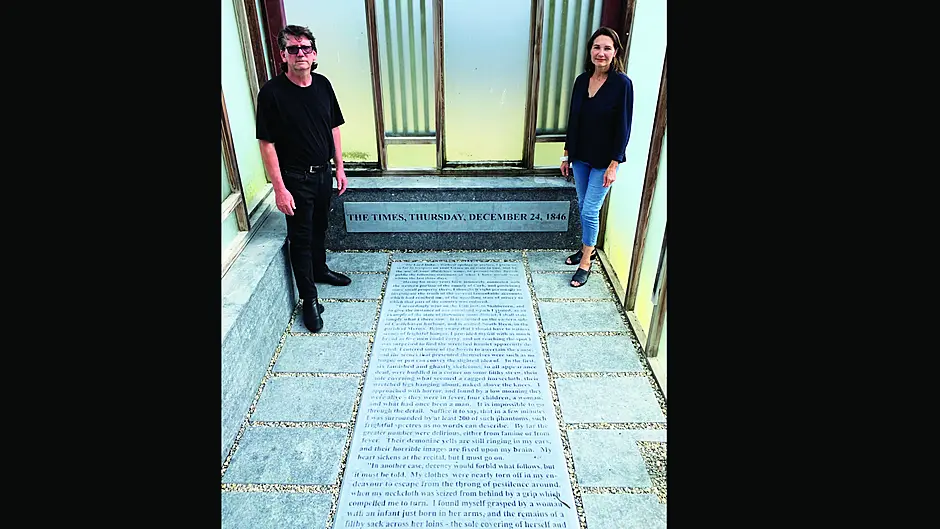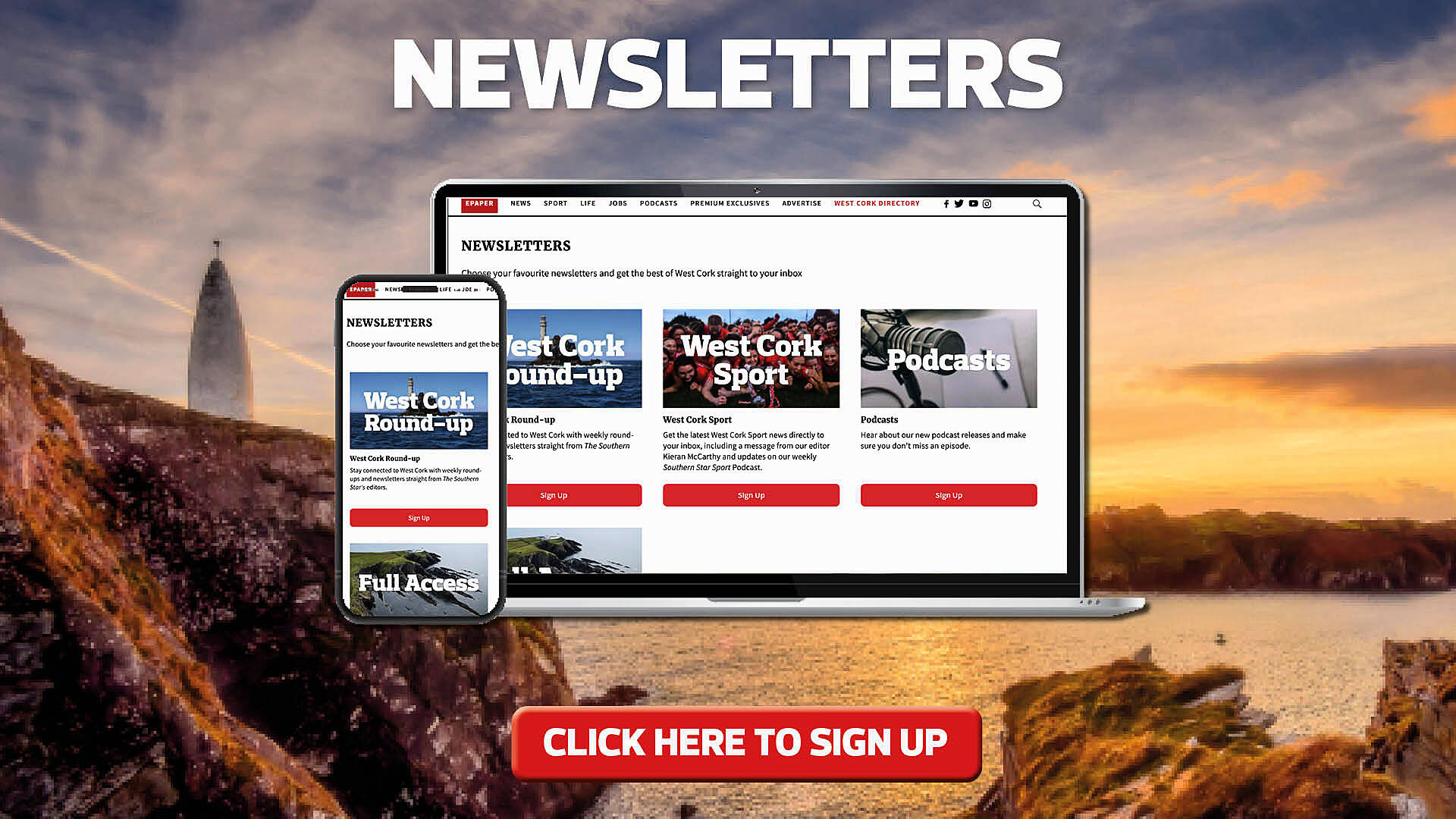A RENOWNED Australian artist and his wife have immortalised, in limestone, an historic letter which showed the horror of the Famine on the Reen peninsula in 1846.
John and Christina Kelly carved parts of a letter by Cork magistrate Nicholas Cummins to the Duke of Wellington, in limestone at their home. The Southern Star exclusively reported on the letter last week.
Cummins’ appeal to the Duke is probably the most frequently-quoted and important letter of the Famine era, and helped to raise significant sums of money for relief in Ireland – £400,000 or €44.3m in today’s terms.
Manager of Skibbereen Heritage Centre Terri Kearney conducted painstaking research which verified Cummins’ letter as original and it was put on display there just this week. John explained: ‘When we moved to Reen in 2003 we had no idea about the area or the significance of this beautiful place and the horrors that the people endured in 1846.
‘There was already an interesting sculpture on the peninsula entitled The Tree Sentinels by Susan O’Toole which was commissioned by our neighbour Anne Shaw. I spoke to Anne and she introduced me to the letter by Nicholas Cummins and I became fascinated by the history and An Gorta Mór (The Great Hunger).’
When the couple moved into their home they also discovered another poignant reminder of the history of the area.
‘We found a large black pot, that we were told was used to feed the pigs on the farm,’ Christina said.
‘But when John was doing his research, he was convinced it was more. He discovered all these pictures of famine pots which looked exactly like ours. Then we found the Phoenix sign on the back of the pot and we discovered that it was brought over by the Quakers in the 1840s.’
The pot has now been incorporated with the limestone tablets as part of an installation at the couple’s home.
‘I constructed a 40ft replica of the outside of the Tate Modern in London, which was to be exhibited elsewhere, but we placed it here on the land and it has become a focal point,’ John said.
‘Now, within the replica we have placed the stone tablets and the famine pot. Outside we are creating a walled garden where I hope to place other carvings and artworks, remembering the people of the famine.’
John and Christina plan to open the walled garden and the sculptures to schoolchildren so that they can become aware of what the people of their community suffered during the famine.









